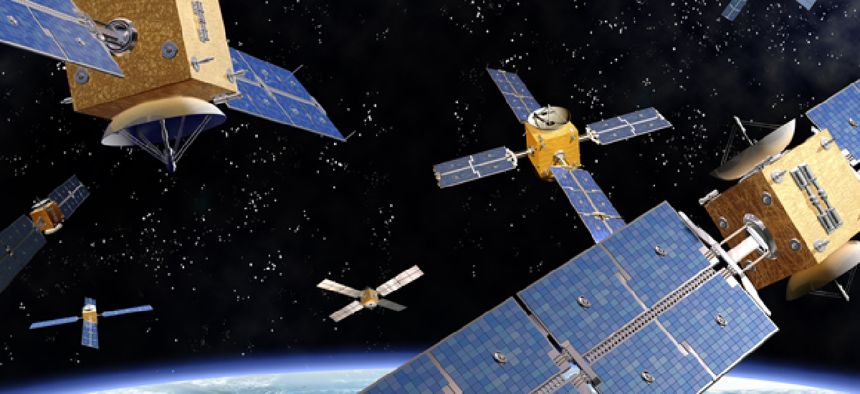DARPA aims to manage satellite-saturated space


Connecting state and local government leaders
The Defense Advanced Research Projects Agency’s new Hallmark program aims to develop a testbed of tools to detect, track and identify all artificial objects in Earth orbit.
Today, thousands of satellites belonging both to nation states and private industries orbit the globe. Between space junk, cyber attacks and hostile countries, these satellites are constantly at risk. The space assets, if damaged, could affect the communications and operations of military units and commercial GPS applications alike.
To address these concerns, the U.S. Strategic Command has signed a series of space situational awareness agreements with partner nations, and the Air Force recently released a Space Enterprise Vision, which examined ways to make space systems more resilient.
Now the military’s primary research arm is getting in on the action. The Defense Advanced Research Projects Agency’s Hallmark program aims to develop more efficient tools for space situational awareness to replace the current tools that were developed when only a handful of nations could launch objects into space.
The first of two planned phases for DARPA’s Hallmark, called Hallmark Software Testbed, will seek to create an advanced enterprise software architecture for a testbed of tools to detect, track and identify all artificial objects in Earth orbit. The flexible, scalable and secure architecture would support space situational awareness and command and control tools and include external capabilities and interfaces for air, cyber, land and maritime environments, the research agency said.
“We envision a system that would fuse information from diverse sources and vastly reduce the overall time required to make and execute decisions and observe results,” said Brad Tousley, director of DARPA’s Tactical Technology Office, which oversees Hallmark.
“For example, an intuitive user interface incorporating 3-D visualization technology would present complex information in novel ways and provide commanders with unprecedented awareness and comprehension,” Tousley said. Such a testbed “would significantly facilitate research and development activities, experiments and exercises to evaluate new technologies for their impact on space command and control capabilities,” he added.




